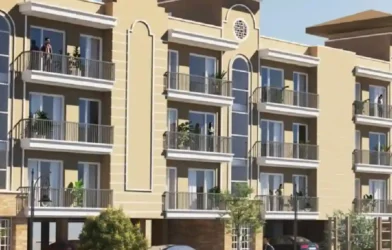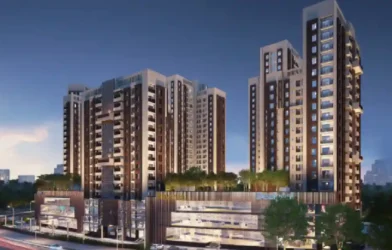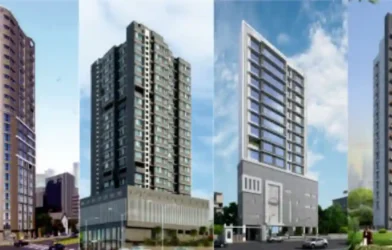Subtotal ₹0.00
We put some light into the Facility Management Costing (FMC)/Common Area Maintenance (CAM) costing including as below references with a medium type of condominium charges per month described with the least cost involved.
Why is common area maintenance relevant?
Specifically, you need to know what these costs are, how they are calculated and what categories of expenses are legitimately included.
Common area maintenance (CAM) calculations affect:
- Net lease negotiation
- Operational and capital budgeting
- Accounting
- Property and asset management
- Property owners
- Tenants
In truth, there is hardly any aspect of commercial leasing into which common area maintenance costs and recoveries do not consistently factor.
What is common area maintenance?
Common areas are portions of a property that are available to all tenants, a group of tenants, or their invitees. It must be remembered that not all of the tenants or their invitees necessarily participate in the use of all common areas. The washrooms on each floor of an access-controlled building are only useful to the tenants that use those levels. Under those circumstances, a limited group of tenants, as opposed to the entire rent roll, share in the common area costs.
Common area maintenance costs are the maintenance costs associated with those shared areas. For the purposes of calculating cost recoveries, other maintenance costs that are not for the exclusive use of one tenant are also grouped into the CAM as operating costs. These can include costs associated with the building walls, roof, exterior lighting and climate control systems.
Cost recovery methods vary
The simplest cost recovery method for a landlord is a bill/rebill method. This works for any expense that is individually determined, such as a service call to a particular location. The landlord gets a bill and invoices the tenant for the amount, usually with an administration or management fee added to it. In cases where more than one tenant shares costs, a multitude of different factors must be addressed explicitly for each expense.
Where tenants share variable costs over a season or fiscal period, a commercial landlord uses a system of property budgets to prepare for the upcoming expenses and charges instalment payments along with the monthly rent. At the end of the period, the manager performs a reconciliation between the actual expenses and the instalment payments collected for that period. Not all leases on a multi-tenant property will have the same anniversary date. For this reason, setting the budget period for a calendar year rather than a lease term year is typical.
Types of cost allocation calculations
The simplest type of cost allocation is an equal distribution based solely on the number of users. Each tenant pays an equal share. This method can be acceptable where the benefit to each tenant is nearly the same and is largely independent of any other factors. However, a simple equal distribution of the expense does not fairly allocate most expenses.
Commercial net leases use a proportional allocation of expense costs based on the rentable area of the premises. In this method, each tenant’s share is the rentable area of their premises divided by the sum of all the rentable areas. This method isn’t perfect, but it generally more accurately reflects the usage by each tenant and is a predictable and repeatable method for making the CAM cost allocation calculations.
Rentable area and area gross-ups
When using the proportional method for allocating CAM costs, the definition of the areas is vital to making the calculations. The most common standard referenced is the Building Owners & Managers Association (BOMA) standard. This standard has changed over time, and also includes different methodologies for the same class of buildings. It is vital to have the lease specify which standard it uses. Additionally, it is critical to have the lease reference track to the most recent version of the standard. Together, these allow the landlord to use a consistent standard for all property leases. Note that individual tenants cannot specify the standard for all the other tenants. In truth, it is common to find that leases reference different standards for tenants in the same complex.
Buildings with non-rentable common areas will typically have those areas proportionally allocated to the rentable areas. This type of calculated area is known as the grossed-up floor area. For example, the common hallways and washrooms on a particular floor of a building will have their floor area divided up and added to the rentable areas of each of the premises on that floor. Grossing-up areas is a means of allocating those non-rentable areas to the tenants that use them. It is important to note that the gross-up process should consider which group of tenants benefit from the common area that is shared. In other words, each of the common areas may not apply to the same group of tenants every time.
Expense gross-ups
First, let’s broadly define a few terms for clarity.
Fixed costs are costs that do not vary on occupancy or usage. Examples of fixed costs are utility infrastructure charges like water and wastewater connection charges.
Variable costs are those that vary with occupancy and operations. Following the above example, the amount of water used and the wastewater generated is a direct result of occupancy and operations occurring on a property. Tenants use water for washrooms and lunchrooms when they occupy a space. Site operations like irrigation use water seasonally.
Expense gross-ups reflect variable operating expenses for buildings not fully occupied. Moreover, these may be grossed up to accurately reflect the portion of the variable costs that are attributable to the occupying tenants.
Slippage is the difference between total property expenses and the amount the landlord can recover from the tenants. Landlords are always trying to minimize slippage, and they do this through the use of expense gross-ups.
Not everything can be grossed-up
Fixed costs are allocated to all of the premises in the user group. Moreover, this allocation applies regardless of any vacancies or lease exclusions. These fixed costs that are not recoverable result in slippage. Fixed costs should not be grossed up to the tenants.
Expenses that should be grossed-up
Operational expenses that are variable with occupancy should be grossed up to fairly allocate those expenses to the tenants that enjoyed or benefited from them. For example, vacant units don’t use water. It isn’t reasonable to proportionally allocate the water usage portion of the bill to all of the premises if some are unoccupied during that billing period. However, not all variable costs are wholly attributable to occupancy. Even vacant units are heated minimally to prevent water and fire sprinkler pipes from freezing in the winter. Security lighting and building controls still use some electricity. In these cases, reasonable estimates or building information systems may provide reasonable guidance on how much of the expenses should be grossed up.
Accounting for discontinuities in calculations
We have already mentioned discontinuities in area data that result from changing standards, area audits, renovations and individual lease terms capping allowable changes. These all affect the proportional allocation part of the calculations.
At the same time, variable expenses affect the way the proportional use gross-up calculations are made.
In addition to those factors, leases start and stop during mid-fiscal periods. Not only does this force a change in allocations to a new tenant, but the leases may also include different, previously negotiated caps and exclusions. What wasn’t recoverable under the previous tenant’s lease may now be recoverable under a new lease and vice-versa.
For all of the above reasons, expenses with billing periods often need to be reduced to per diem amounts and allocated on a daily basis. Certainly, any billing periods spanning the start and end of a fiscal period will need to have adjustments made to allocate the correct amounts to each period. Additionally, any billing period that covers one or more discontinuity events further adds complication. In these cases, the manager will need to proportionally adjust each for the specific date ranges.
How to do common area maintenance calculations
Here are the steps for manually performing CAM calculations:
Step 1
For each invoice, check if it actually is a common area maintenance expense. If it is with respect to at least one lease, check which cost recovery method is applicable.
Step 2
For each class of expenses, determine to which group of tenants the fee applies. At this point, it doesn’t matter if the lease has an exclusion on that particular expense as the denominator requires the total area. Calculate the area gross-ups. If there is a discontinuity in the area values, compile area data for each time period that is at least partially within the relevant fiscal period.
Step 3
Check the expenses to determine whether it is a fixed or variable costs. Undoubtedly, some invoices will have both types on the same invoice. Apply the correct proportional allocation to the fixed costs and calculate the gross-ups for the variable costs based on occupancy. At the end of this step, you should have the correct cost allocation for each of the premises based on the type of expenses and the relevant areas.
Step 4
Using the lease terms, determine if the expense class is eligible for recovery. For example, if the lease states that the roof membrane maintenance is the sole responsibility of the landlord, roof leak repairs aren’t allowed to be charged to that particular tenant even if it is allowed for all the other tenants. This ineligible amount is slippage to the landlord; the remaining tenants do not pay for it. The same process applies if there are limiting caps on cost recoveries for all or some of the common area maintenance and operating expense classifications.
Alternatively, a lot of smaller firms without the available resources give up on making complex calculations. Consequently, they accept thousands of dollars annually in slippage in what are otherwise legitimately recoverable CAM charges.
The quick, accurate and efficient way
Is there a better way to perform CAM calculations? Yes, there is. CRESS blue commercial property management software has automation systems that perform all those steps and provides an audit trail for each invoice. It’s one of the key reasons we designed it. Our software system also produces annual reconciliation reports without the need for any math skills or spreadsheets.
This is enterprise-level sophistication at an everyday price, far below the cost of doing it any other way. Confidence, efficiency and professionalism are within reach for all commercial property management companies. It’s your time to be ahead.
We describe an example for a 22.5-acre area, (built with 25 Towers, Ground+9 Floors, and 60% lush green common area) medium-rise residential complex costing to operate smoothly as below.
Housekeeping expenses can be calculated at 18 paise/ sq. ft, considering each HK boy on each tower, and 10 paise/ for housekeeping consumables. Horticulture & landscape maintenance would be 22 paise / per sq. ft considering each gardener with 1 supervisor for 2 acres along with consumables, any replacement of new trees shall be an actual additional cost.
Security expenses would be a minimum of 38 paise. Per sq. ft, considering each guard at each tower, few guards at in/out entrance. Lift maintenance could be 28 paise / per sq. ft, (There is no need in the first year, as all lifts and equipment are in the warranty period) lift operated by every stakeholder with curtailed SOP, in every tower, if the company proposes, a lift operator in each tower, the costing will go higher.
DG & Grid maintenance, including all technical equipment situated in the condominium, the cost would be 22 paise/per sq. ft, however, all equipment replacement costs would be an additional expense. Fire & safety expenses will cost 15 paise / per sq. Ft., Club & recreational hubs maintenance would be 20 paise / per sq. ft., Running operating cost of facility office & accounts would be a minimum as 23 paise/ per sq. ft, considering an FM, 2 Help Desk executives, 1 AFM & 1 Accountant with Accounts executive.
Garbage collection & removal and CCTV surveillance, with EPBX operations, would be costing 16 paise / per sq. ft., Guest moving vehicles (Golf Cart) maintenance, considering 4 Driver, with 2 Golf Cart would be 8 paise/ per sq. ft are the costing for the entire operation of a residential society.
Common Area Electricity consumption cost would be around 64 pause / per sq. ft. to be levied separately to the stakeholders of the residential society on actual can be varied 5% to 10%, as per SOP planned for electricity consumption management, hence nowadays, all residential welfare associations (RWAs) are interested to replace the common area electricity assets to occupy the solar energy called green power, to reduce the maximum cost of common area electricity consumption.
The total of these above minimum operational cost is 2.20 paise/per sq. ft. excluding Taxes & levies, plus 64 paise / per sq. ft. would be expected to run a semi-class residential society along with an essential, commercial hub inside the condominium.














